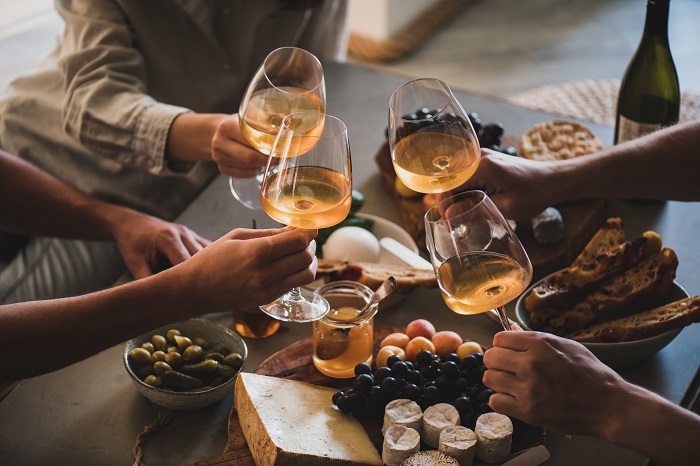
Once considered an outsider of the wine world, orange wine has become popular again within the wine world. And why do wine enthusiasts love it so much? Well, that’s down to its intense aromas, tannic structure and a production method that’s been around for millennia. This unique wine has been known to confuse more than one talented taster at a blind tasting…
Where does orange wine come from?
Having seen growing success since in the 2000s, orange wine is generally identified as the “latest” natural wine trend. But it is nothing new. Production can be traced back 8,000 years to Georgia, the country considered the birthplace of viticulture.
Having been forgotten about over the centuries, orange wines were brought back into fashion in the 1990s by Italian producers who preferred natural wine and Georgian production techniques. They called this type of wine ramato (‘coppery’ in English) or macerato using local varieties such as Friulano, Pinot Grigioa and Ribolla Gialla to produce it.
Nowadays, this style of wine has found its fans and winemakers who honour these ancient production methods. Producers from around the world are crafting this style of wine. Those creating orange wine in France include Henri Milan (Provence), Château Lafitte (Jurançon), Vignoble du Rêveur (Alsace), Domaine des Roches Neuves (the Loire Valley), Frédéric Cossard (Burgundy) and they are all available on iDealwine! But that’s not all, you can also find orange wine from Greece, Spain and Italy.
How is orange wine made?
Orange wine is often defined as a white wine made using red wine production methods. They are also known as ‘macerated white wine’ which is when the solid parts of the grapes (skin, seeds and stalks) are left in contact with the juice during fermentation. Alcoholic fermentation is the process in which the yeast naturally present in the grapes transforms the sugar in the grape juice into alcohol.
Red wines are normally produced in this way with the solid matter being in contact with the juice because the grape skins taint the juice and impart tannins. If you stop and think about it, red and black grapes have clear flesh and so the wine’s colour comes from the skin and its intensity is linked to how long the juice is left to macerate with them. The deeper in colour an orange wine is, the longer we can presume its maceration was. As well as adding colour, namely the deep yellow hue, the skin of white grapes brings structure and tannins to the wine. Orange wine marries the tannic undercurrent of a red wine with the freshness of a white wine. On average, maceration lasts several weeks but it can last anywhere between a few hours and two years.
In Georgia, maturation takes place in terracotta clay containers called ‘kyevris’. Winemakers choose to use an array of containers made from inert materials such as cement and stainless-steel vats, amphora, earthenware jars, and oak barrels (which add tannins to the wine and round them off thanks to micro-oxygenation).
What are the characteristics of orange wine?
Of course, just like a red or white wine, orange wine differs depending on the varieties used, where the grapes are from, the climate and the chosen vinification and ageing methods. Generally speaking, they can be defined by their texture, tannins, richness and fine bitters. They are also adorned with intense aromas with floral, dried fruit, nutty, toasted and, sometimes, oxidative notes. They also generally have some ageing potential thanks to their good tannic structure.
What are orange wine pairing ideas?
Thanks to its balance between freshness, structure, and intensity of aromas and flavours, orange wine can make a good wine of choice for food pairings. The combination of tannins and lightness mean that it can accompany meaty dishes as well as flavourful ones. For example, you could choose a creamy mushroom dish, vegetable gratin, poultry and white meat dishes, and fleshy fish. It would also marry wonderfully with Middle Eastern and North African dishes. Think of the rich spices of Ethiopian chicken or goat, lamb tagine, aubergines and hummus. It would also go well with hard cheeses such as Manchego or halloumi. Make sure to serve the wine between 12°C and 14°C, a service temperature between that of a white and red wine.



